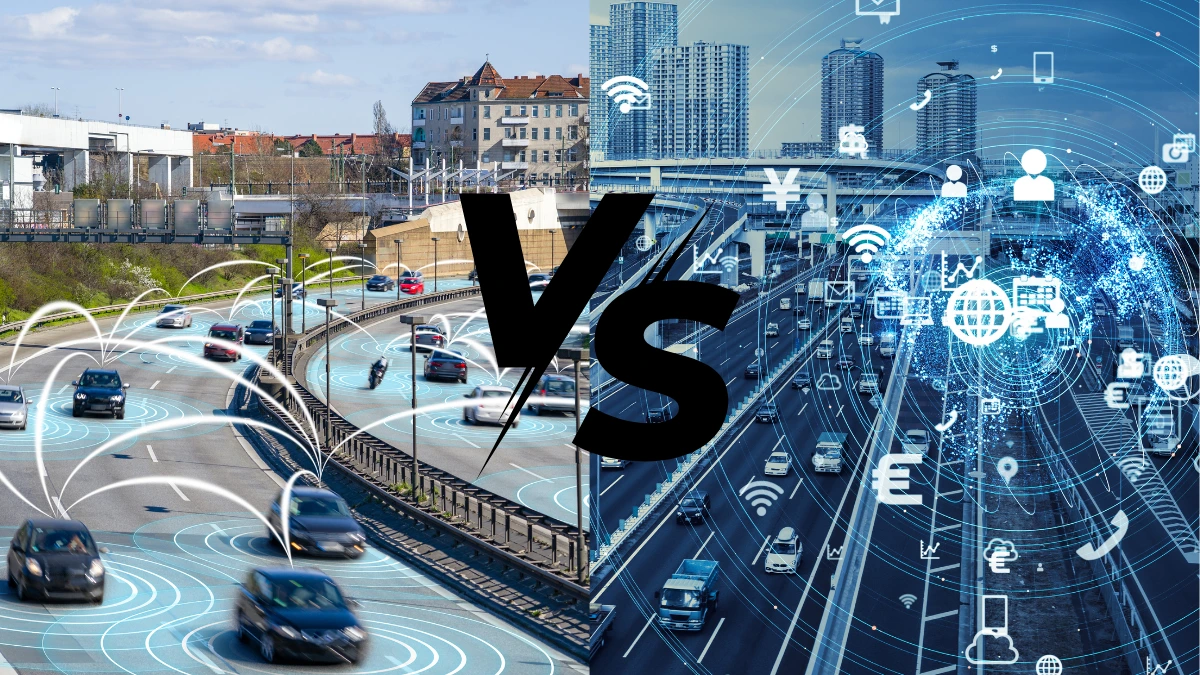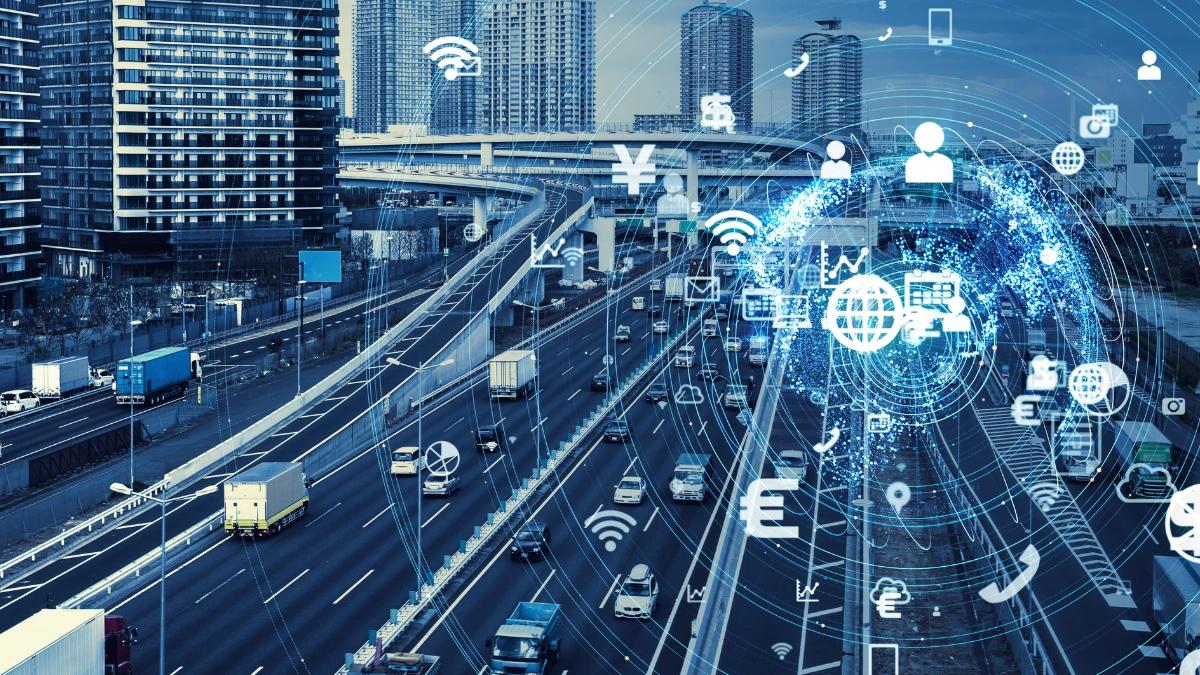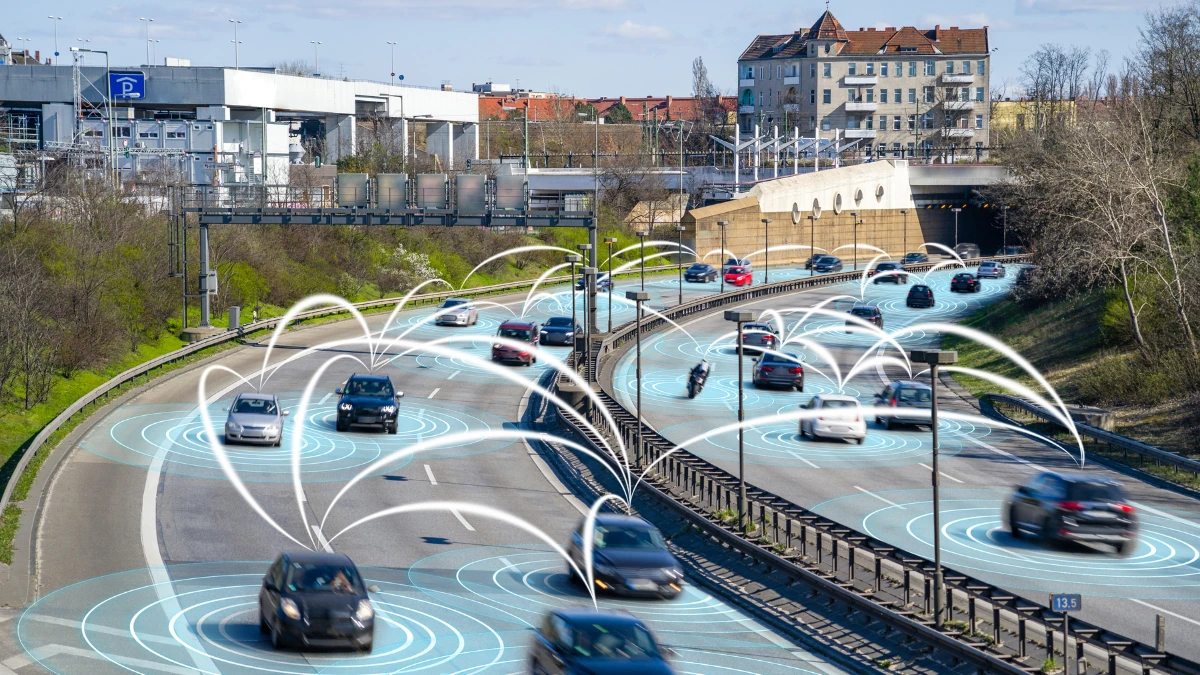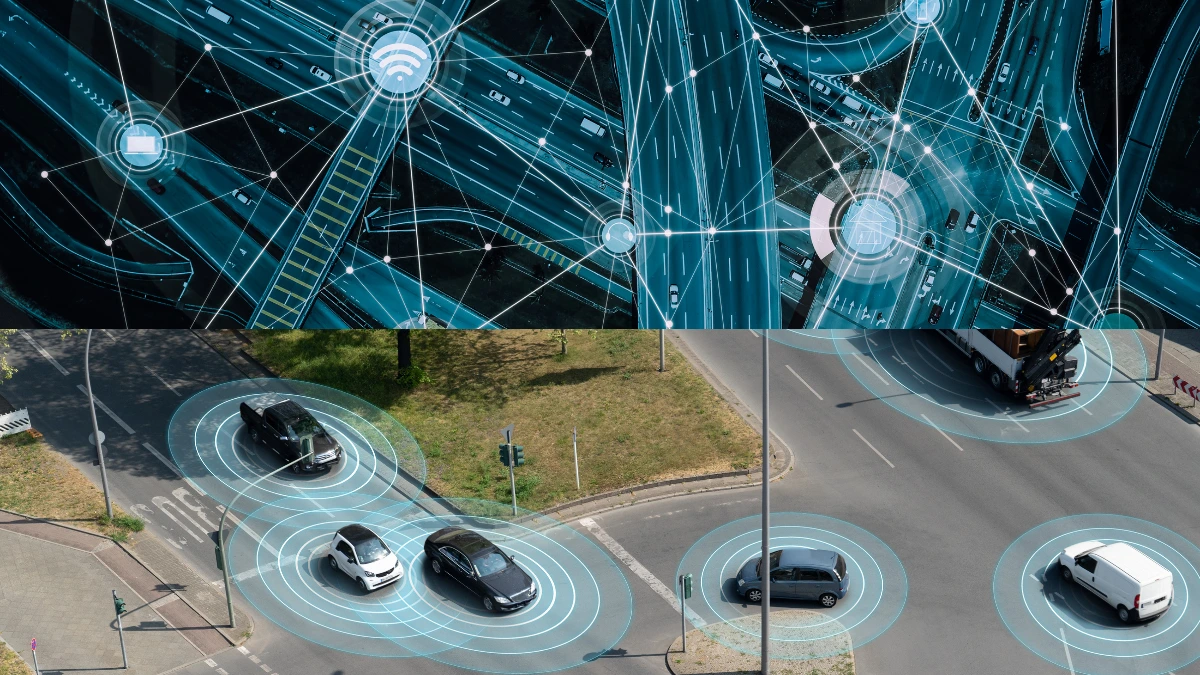Dedicated Short-Range Communication (DSRC) and Cellular Vehicle-to-Everything (C-V2X) are the technologies that support digital transportation. Although both maximize vehicles to communicate with each other on the road, DSRC vs C-V2X have some significant differences.
The differences between a DSRC vs C-V2X include several aspects such as basic technology, latency and response speed, applications, required infrastructure, technology maturity, scalability, and integration.
This article will delve into the important differences between DSRC vs C-V2X to communicate with each other on the road.
What is a DSRC?

Dedicated Short-Range Communication (DSRC) is an electronic device installed in vehicles that enables communication between vehicles (Vehicle-to-Vehicle / V2V).
Not only between vehicles, but with this device, vehicles can also receive information from smart infrastructure, such as traffic lights or electronic message signs (Vehicle-to-Infrastructure / V2I).

DSRC can provide information about surrounding conditions, traffic congestion, accidents, or adverse weather conditions ahead within milliseconds.
This is certainly a welcome development for road users, as it enhances road safety, reduces accidents, and makes traffic systems more efficient.
What is a C-V2X?

C-V2X (Cellular Vehicle-to-Everything) is a cellular network-based vehicle communication technology. C-V2X works on LTE technology and can be further developed for 5G networks.
C-V2X enables vehicles to communicate not only with other vehicles (Vehicle-to-Vehicle / V2V) and infrastructure (Vehicle-to-Infrastructure / V2I), but also with pedestrians (Vehicle-to-Pedestrian / V2P) and cloud networks (Vehicle-to-Network / V2N).
The Differences of DSRC vs C-V2X

Dedicated Short-Range Communication (DSRC) and Cellular Vehicle-to-Everything (C-V2X), as the technologies that support digital transportation, are different in some aspects. Here are six differences between DSRC vs C-V2:
1. Basic technology
DSRC: Uses the IEEE 802.11p (WAVE) standard, which is a modification of Wi-Fi technology.
C-V2X: Uses cellular technology, such as LTE (4G) and 5G, which is already widely used in mobile phones.
2. Latency and response speed
DSRC: Since communication is direct without intermediaries, data can be sent and received in just milliseconds, resulting in extremely low latency.
C-V2X: Has slightly higher latency when using cellular network mode, as it depends on network quality and data traffic density at the time.
3. Applications
DSRC: Suitable for basic safety applications, such as collision warnings and traffic information.
C-V2X: Supports more complex applications, such as sensor data sharing, video, and autonomous vehicle control.
4. Required infrastructure
DSRC: Requires additional devices such as Road Side Units (RSUs) installed on the side of the road. These RSUs serve as the meeting point between vehicles and infrastructure.
C-V2X: Utilizes existing cellular infrastructure, such as BTS towers. However, special C-V2X devices that support PC5 mode are still required for direct communication between vehicles.
5. Technology maturity
DSRC: More mature, as it has been in existence longer and implemented in various countries for projects such as early warning systems for accidents, automated toll systems, and pedestrian crossing notifications.
C-V2X: Still in the development and testing phase, but has strong support from major global technology companies funding and promoting its implementation, such as Qualcomm, Huawei, and global cellular network operators.
6. Scalability and integration
DSRC: Reliable for local communication, but somewhat limited when it comes to integration with large-scale systems such as smart cities or autonomous vehicles connected to the cloud.
C-V2X: More flexible, as it can combine direct and network-based communication, thereby integrating with edge computing and real-time data analytics as required.
That’s the difference between DSRC vs C-V2 that support digital transportation, in maximizing vehicles to communicate with each other on the road.
So which is better? If you need a system that can be implemented quickly and is already standardized for basic safety applications, DSRC is the ideal choice.
But for a long-term vision of building a smart vehicle ecosystem connected to the cloud and large-scale smart cities, C-V2X could be the investment of the future.